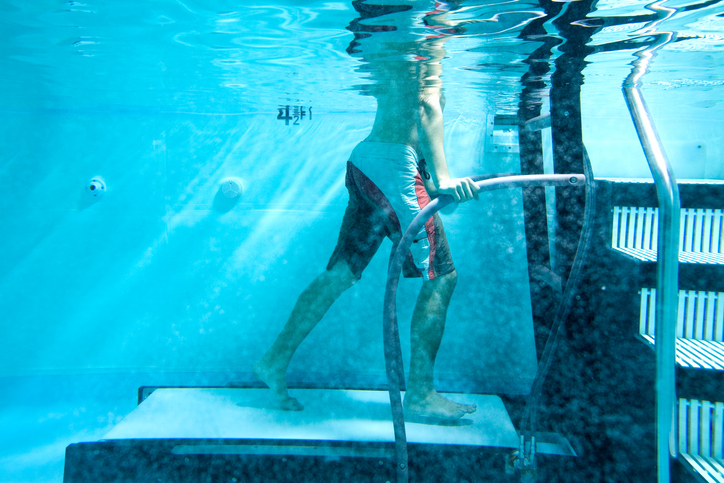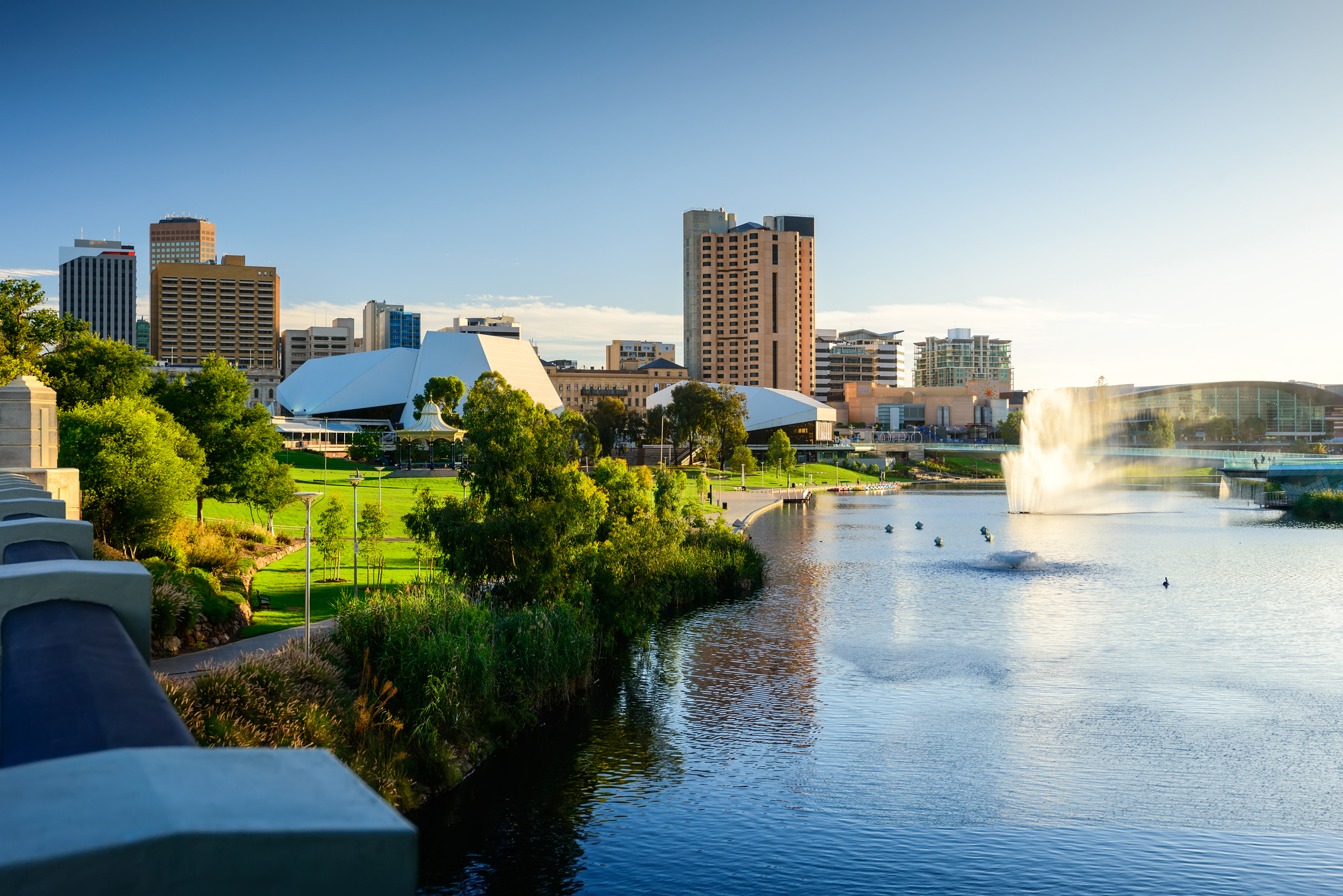The Seawater Cure: How the French Slim Down
A food-and-wine writer from the U.S. describes his annual pilgrimage to the Normandy Coast for thalassotherapy—a round of treatments that’s proven to be an antidote for his occupational overindulgence.
AS A food-and-travel writer who lives in France, I face occupational hazards other people might envy: Think white Burgundies, foie gras, butter, cream and the world’s best cheeses. It’s a constant battle to avoid ending up with the silhouette of a pear.
That’s why in the years since I moved to Paris in 1986, I’ve become a fan of thalassotherapy, taking dozens of “cures” at some of the 50-odd thalassotherapy centres along the Atlantic and Mediterranean littorals of France. The word derives from the Greek words “thalassa” (sea) and “therapeia” (to nurse or cure) and refers to a series of treatments—heated seawater baths, stimulating jet showers and seaweed wraps—and exercise such as aqua gym (in-water calisthenics).
While these cures alleviate the fatigue and sluggishness I feel after months of late-night dinners and deadline pressure, I’ve found that a weeklong thalassotherapy circuit that includes low-calorie meals also contributes to a healthier, slimmer, better-toned me. Apparently, Plato believed “the sea cures all human ailments,” but my goal is simply to retreat, relax and, at the end, be able to tighten my belt to its customary notch.
A thalassotherapy experience can be completed in as little time as a weekend, but a typical stay lasts 5-7 days. A 6-day signature cure with room and board and four treatments a day costs about $1,580 at Thalazur in Cabourg, a well-mannered Belle Époque seaside resort in Normandy. It was there I booked my most recent extended cure in February, 2020.
I’d heard of Cabourg as a favourite escape of Marcel Proust, who stayed at the Grand Hôtel and, by his account, would gaze at the flinty waves of the English Channel while enjoying his favourite sole Normande (sole poached in cider with a rich cream sauce garnished with button mushrooms, shrimp and mussels).
The centre is a brisk 10-minute walk from the heart of Cabourg with its fan-shaped street plan spreading out from the casino and the Grand Hôtel. Even if my low-calorie regimen barred me from indulging in sole Normande, I never felt gastronomically deprived as I enjoyed a healthy menu with tasty choices such as freshly shucked Norman oysters and steamed salmon with spinach.
My pleasantly monastic existence found me donning a terry cloth bathrobe and slippers every morning and reporting for my daily program of five treatments. Administered by cheerful spa attendants in individual white-tiled spa cabins, these averaged 25 minutes each. While the seaweed jet baths were blissfully relaxing, the high-velocity jet showers, an attempt to pummel the cellulite out of you and improve circulation, were more of a “grin and bear it” prospect.
I can’t pretend I loved the wraps either: Slathered in puréed seaweed, swathed in huge sheets of plastic film and then covered with a heated blanket, I felt like I was being mummified. This detoxification process promises to rid you of “water weight,” and your parched skin receives a good dose of seaweed’s moisturising oligo elements, but I inevitably developed an itch somewhere I couldn’t scratch. Still, when the slick plastic was stripped away and I could shower, I felt hugely invigorated.
More alarming, I also endured cryotherapy. The attendants locked me in a capsule of dry air cooled to -230 degrees Fahrenheit for three minutes, an experience meant to improve circulation and increase production of cortisol, collagen, endorphins and adrenaline. The adrenaline rush, at least, was real; it was a profound relief to exit my capsule after being subjected to a blast of Arctic chill while wearing nothing more than black paper spa panties.
These morning regimens induced a languorous exhaustion, so I inevitably followed up the light lunch with a nap in the afternoon. Then, refreshed, I took long walks on the beach or bicycled along the promenade in front of the hotel.
Memories of my stay—and the 7 pounds I dropped there—prompted me to test the waters again last winter. I booked a 1-night, 2-day weekend sampler at the Thalazur in Port Camargue on the Mediterranean, an hour from my house.
This centre was smaller but also had lovely sea-views, plus my stylish sea-shack style room came with a large private balcony. The three treatments a day were excellent, too; the cost, about $178, was worth it for the belt-tightening.
When, on the Monday after my return home, I went to the single-window post office in my village, the post mistress raised her eyebrows theatrically. “Bonjour!” she said with a grin. “What happened!? You look great!” I went for a weekend of thalassotherapy, I told her. “Ah, voilà! La Thalasso fait toujours du bien,” she purred.
She was right, of course. I look forward to a week-long saltwater wallow this winter, maybe in Bandol with its views of the Mediterranean, or at the elegant new Relais Thalasso in the seaside town of Pornichet on the sunny Atlantic coast in the Loire region. Unlike at other centers, where you traipse about between treatments, the Relais Thalasso crew stash you in a spacious private suite with a comfy lounge area, the better to nap before another go-round.
Water, Water, Everywhere
France pioneered thalassotherapy but you can find excellent centers in other countries, too
La Perla, Spain
For the uninitiated, La Perla, a stylish centre in San Sebastián in the Spanish Basque Country, is a great place to sample thalassotherapy before committing to a full-on cure. Originally established by Spain’s Queen Maria Cristina, when she was queen from 1829-1833, at the royal family’s summer house here, the spa was rebuilt in 1912 on a site overlooking La Concha, a crescent-shaped beach. A 5-hour day pass gives you access to a hydrotherapy pool, water beds, marine steam baths and an in-water exercise circuit. Another option includes a massage and lunch in the spa’s restaurant overlooking the sea. From $49 for a 5-hour day pass.
Vilalara Longevity Thalassa and Medical Spa, Portugal
Vilalara Longevity Thalassa and Medical Spa in Lagoa, a city in Algarve, Portugal’s southernmost region, is set in lush gardens overlooking the Atlantic. It has two seawater pools, 20 treatment cabins and a variety of cures, including a 5-night detoxification program with 2 thalassotherapy sessions per night, lymphatic drainage massages, access to thalasso pools and a consultation with a nutritionist to personalise a tasty low-calorie meal plan or a liquid diet of anti-inflammatory shakes, juices and soups. From about $3,899.
Divani Apollon Palace and Thalasso, Greece
Situated on the Athenian Riviera, this world-class spa in the Divani Apollon Palace and Thalasso outside of Athens boasts the largest thalassotherapy pool in Greece with 16 different water jet areas in its expanse. The X factor at this family-run beach-front property with 25 treatment rooms is its healthy low-calorie menu created by the hotel’s chef and in-house dietician. Appetising proof that shedding pounds needn’t mean privation: the zucchini-crust Greek pizza with anthotryo (fresh cheese), cherry tomatoes, oregano and EVOO. From about $1,747 for a 3-day stay.
The Wall Street Journal is not compensated by retailers listed in its articles as outlets for products. Listed retailers frequently are not the sole retail outlets.
 Copyright 2020, Dow Jones & Company, Inc. All Rights Reserved Worldwide. LEARN MORE
Copyright 2020, Dow Jones & Company, Inc. All Rights Reserved Worldwide. LEARN MORE
This stylish family home combines a classic palette and finishes with a flexible floorplan
Just 55 minutes from Sydney, make this your creative getaway located in the majestic Hawkesbury region.
The marketplace has spoken and, at least for now, it’s showing preference for hybrids and plug-in hybrids (PHEVs) over battery electrics. That makes Toyota’s foot dragging on EVs (and full speed ahead on hybrids) look fairly wise, though the timeline along a bumpy road still gets us to full electrification by 2035.
Italian supercar producer Lamborghini, in business since 1963, is also proceeding, incrementally, toward battery power. In an interview, Federico Foschini , Lamborghini’s chief global marketing and sales officer, talked about the new Urus SE plug-in hybrid the company showed at its lounge in New York on Monday.

Lamborghini
The Urus SE SUV will sell for US$258,000 in the U.S. (the company’s biggest market) when it goes on sale internationally in the first quarter of 2025, Foschini says.
“We’re using the contribution from the electric motor and battery to not only lower emissions but also to boost performance,” he says. “Next year, all three of our models [the others are the Revuelto, a PHEV from launch, and the continuation of the Huracán] will be available as PHEVs.”
The Euro-spec Urus SE will have a stated 37 miles of electric-only range, thanks to a 192-horsepower electric motor and a 25.9-kilowatt-hour battery, but that distance will probably be less in stricter U.S. federal testing. In electric mode, the SE can reach 81 miles per hour. With the 4-litre 620-horsepower twin-turbo V8 engine engaged, the picture is quite different. With 789 horsepower and 701 pound-feet of torque on tap, the SE—as big as it is—can reach 62 mph in 3.4 seconds and attain 193 mph. It’s marginally faster than the Urus S, but also slightly under the cutting-edge Urus Performante model. Lamborghini says the SE reduces emissions by 80% compared to a standard Urus.
Lamborghini’s Urus plans are a little complicated. The company’s order books are full through 2025, but after that it plans to ditch the S and Performante models and produce only the SE. That’s only for a year, however, because the all-electric Urus should arrive by 2029.

Lamborghini
Thanks to the electric motor, the Urus SE offers all-wheel drive. The motor is situated inside the eight-speed automatic transmission, and it acts as a booster for the V8 but it can also drive the wheels on its own. The electric torque-vectoring system distributes power to the wheels that need it for improved cornering. The Urus SE has six driving modes, with variations that give a total of 11 performance options. There are carbon ceramic brakes front and rear.
To distinguish it, the Urus SE gets a new “floating” hood design and a new grille, headlights with matrix LED technology and a new lighting signature, and a redesigned bumper. There are more than 100 bodywork styling options, and 47 interior color combinations, with four embroidery types. The rear liftgate has also been restyled, with lights that connect the tail light clusters. The rear diffuser was redesigned to give 35% more downforce (compared to the Urus S) and keep the car on the road.
The Urus represents about 60% of U.S. Lamborghini sales, Foschini says, and in the early years 80% of buyers were new to the brand. Now it’s down to 70%because, as Foschini says, some happy Urus owners have upgraded to the Performante model. Lamborghini sold 3,000 cars last year in the U.S., where it has 44 dealers. Global sales were 10,112, the first time the marque went into five figures.
The average Urus buyer is 45 years old, though it’s 10 years younger in China and 10 years older in Japan. Only 10% are women, though that percentage is increasing.
“The customer base is widening, thanks to the broad appeal of the Urus—it’s a very usable car,” Foschini says. “The new buyers are successful in business, appreciate the technology, the performance, the unconventional design, and the fun-to-drive nature of the Urus.”
Maserati has two SUVs in its lineup, the Levante and the smaller Grecale. But Foschini says Lamborghini has no such plans. “A smaller SUV is not consistent with the positioning of our brand,” he says. “It’s not what we need in our portfolio now.”
It’s unclear exactly when Lamborghini will become an all-battery-electric brand. Foschini says that the Italian automaker is working with Volkswagen Group partner Porsche on e-fuel, synthetic and renewably made gasoline that could presumably extend the brand’s internal-combustion identity. But now, e-fuel is very expensive to make as it relies on wind power and captured carbon dioxide.
During Monterey Car Week in 2023, Lamborghini showed the Lanzador , a 2+2 electric concept car with high ground clearance that is headed for production. “This is the right electric vehicle for us,” Foschini says. “And the production version will look better than the concept.” The Lanzador, Lamborghini’s fourth model, should arrive in 2028.
Just 55 minutes from Sydney, make this your creative getaway located in the majestic Hawkesbury region.
This stylish family home combines a classic palette and finishes with a flexible floorplan






















